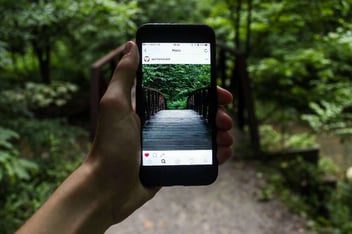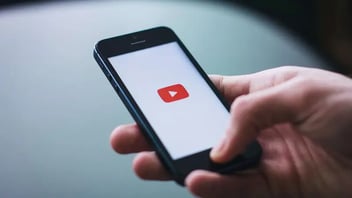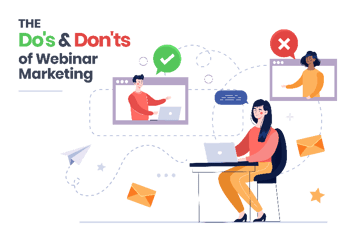Automatizar su embudo de conversión: Qué hacer y qué no hacer
Se necesita tiempo para nutrir, generar, calificar y convertir clientes potenciales en clientes satisfechos, y la automatización de su proceso de embudo de conversión es esencial para los vendedores con la esperanza de aumentar las ventas.
Sin embargo, la reducción de los esfuerzos manuales necesarios para mover los clientes potenciales a través del embudo es clave para el éxito general del negocio. Por lo tanto, un embudo de conversión optimizado es un factor clave en ese proceso.
 Crear un embudo de ventas implica acicalar, preparar y convencer a los clientes potenciales. Ofrecer contenido informativo de alta calidad en todas las etapas del embudo es crucial durante todo el proceso, ya que les mantiene interesados con lo que necesitan en cada etapa.
Crear un embudo de ventas implica acicalar, preparar y convencer a los clientes potenciales. Ofrecer contenido informativo de alta calidad en todas las etapas del embudo es crucial durante todo el proceso, ya que les mantiene interesados con lo que necesitan en cada etapa.
Con su orientación, sus clientes potenciales pueden facilitar el embudo hacia la toma de una decisión de compra de la manera más eficiente posible. Y no hay nada más eficiente que la automatización, que, aparte de una cantidad relativamente pequeña de trabajo de preparación, prácticamente elimina el trabajo manual, dejándole el tiempo que necesita para centrarse en la estrategia y otras áreas de la generación de prospectos.
HACER:
Conozca a su público objetivo.
Hágalo antes de empezar a desarrollar su embudo. Pregunte a los clientes actuales, a los principales asociados de ventas y a las principales partes interesadas acerca de las necesidades y deseos de su público. Esta información es beneficiosa para saber por qué la gente quiere invertir en su marca.
Construya un perfil de comprador.
Los buyer personas aumentan su comprensión de sus clientes potenciales ideales en función de sus necesidades específicas, datos demográficos, puntos de dolor y cualquier pregunta con la que puedan tropezar mientras se deslizan por el embudo. La creación de un perfil de cliente ideal le permite ir más allá de su empresa y sus clientes. Le ayuda a utilizar la investigación de la competencia y datos precisos para saber quién compra sus productos.
Compare sus precios con los de la competencia.
Averigüe qué hace única a su empresa y aprovéchelo para captar nuevos clientes. Conozca su posición en el mercado. La comparación de precios es un excelente punto de partida para crear un plan de contenidos, elaborar contenidos de generación de clientes potenciales y crear una campaña de marketing.
Utilice una combinación de activadores basados en el tiempo y el comportamiento.
El marketing de activación se considera marketing basado en eventos, lo que significa que envía mensajes o notificaciones en momentos específicos para responder a un evento. Debe llegar a los clientes en el momento perfecto. Cada evento desencadena una respuesta personalizada a usuarios específicos. Por ejemplo, un disparador basado en el tiempo enviaría una secuencia de correos electrónicos de lead-nurturing en un momento o intervalo específico. Un desencadenante basado en el comportamiento enviaría un correo electrónico adicional o una acción si un visitante envía un formulario de captación de clientes potenciales o un comportamiento similar.
Personalice siempre que sea posible.
La personalización ayuda a crear una conexión humana entre la marca y el cliente. Puede crear correos electrónicos orientados al cliente que utilicen su nombre en todo el correo electrónico y que tengan la sensación de ser un mensaje enviado sólo a ellos por una persona en lugar de un sistema automatizado. El objetivo es que en lugar de sentirse como un típico correo masivo de su marca, el cliente sienta que está recibiendo un mensaje de un miembro real del equipo.
Implemente un chatbot con IA.
Los chatbots te permiten invitar a interactuar con nuevos visitantes de forma automática. Puede hacer que sus visitantes se sientan más valorados proporcionándoles una experiencia más personalizada y positiva cuando hagan clic en su sitio web. Los bots están ahí para asistir a sus visitantes y ayudarles a navegar por su sitio. El objetivo final es utilizar un chatbot para convertir a los visitantes en clientes.
Pruebas A/B y automatización del ganador.
Las pruebas A/B, a veces denominadas pruebas divididas, comparan diferentes versiones de los mismos activos de marketing y miden las diferencias de rendimiento para saber cuál funciona mejor. Las pruebas A/B le ayudan a decidir qué ofertas, palabras o palabras clave -o día u hora de los envíos- funcionan mejor para su marca, lo que le permite optimizar sus comportamientos.
Automatice el contenido generador de leads.
El contenido de anclaje es una valiosa herramienta que puede automatizarse fácilmente. Un simple formulario puede activarlo y le garantiza que ofrece a sus clientes potenciales un contenido atractivo al tiempo que comparte con su empresa datos igualmente valiosos. El contenido cerrado, como un libro electrónico, una guía del comprador o un documento técnico, es ideal para la automatización, y los vídeos o los seminarios web son contenidos cerrados comunes que pueden convertir a la audiencia adecuada. Los seminarios web se dirigen directamente al público y requieren confirmación de asistencia. A menudo son en directo, por lo que los clientes potenciales pueden interactuar directamente en muchos casos y sentir que están recibiendo acceso VIP a su marca. A la hora de crear un buen contenido que genere clientes potenciales, tenga en cuenta su sector y ofrezca algo que los clientes potenciales no puedan perderse.
Cree campañas.
Una vez que haya establecido el contenido ancla generador de prospectos, estará listo para crear una campaña automatizada. Cree contenido que responda a las necesidades y los puntos débiles específicos de los clientes potenciales. Establezca una llamada a la acción final, para que el cliente potencial pueda seguir aprendiendo más sobre su marca. Considere las CTA que programan conversaciones, solicitan demostraciones o comparan soluciones para ayudar a impulsar las conversiones. Antes de la CTA final, asegúrese de que su información ilustra cada paso del recorrido del comprador cuando utilice la automatización del embudo basada en el tiempo o campañas de goteo por correo electrónico. Si un cliente potencial se involucra con su contenido al principio de su recorrido, llévelo a la CTA final lo antes posible. La definición de campañas es un elemento central de su estrategia de Inbound Marketing.
NO HACER:
Hay errores comunes que los profesionales del marketing cometen cuando intentan automatizar un embudo de conversión. Su embudo es el recurso más importante para hacer crecer su negocio, y también necesita un poco de nutrición. Su éxito depende de la eficacia de su embudo, así que asegúrese de optimizarlo continuamente o verá cómo disminuyen los beneficios. No supervisar las campañas, no realizar un seguimiento de los clientes potenciales y no implementar una llamada a la acción optimizada son algunos de los errores más comunes que cometen las empresas al inicio de la automatización de procesos. Así que evite estos errores comunes que frenarán su crecimiento.
Configurar y olvidarse.
Muchos profesionales del marketing utilizan recursos externos y herramientas en línea para ayudar a automatizar las campañas. Utilizar estas herramientas es un buen comienzo, pero no puede dejar que los recursos hagan todo el trabajo. Supervise su campaña con frecuencia, asegurándose de que todo funciona correctamente. Crear un embudo de conversión automatizado lleva mucho tiempo y energía y requiere muchos ajustes para que llegue a ser lo mejor posible.
Recuerde que está bien , e incluso es recomendable , modificar la campaña después de que se haya puesto en marcha. Aquí es donde entran en juego elementos como las pruebas A/B para campañas de correo electrónico. Elimine los pasos de sus campañas que no funcionen, averigüe por qué y sustitúyalos por algo que sí funcione. Mantenga su estrategia de contenidos activa, oportuna y relevante para sus objetivos de marketing y ventas.
Estar al borde de lo "espeluznante" con un exceso de personalización.
La personalización fomenta la confianza del cliente en su marca e inicia su relación. Sin embargo, enviar demasiada información personal sobre un cliente podría incomodarle y provocar una falta de confianza en su marca. Haz saber a tus clientes que sabes quiénes son y lo que necesitan, pero no seas raro.
No hacer un seguimiento.
Este es un error común en el embudo. Los propietarios dedican mucho tiempo y esfuerzo a crear excelentes páginas de aterrizaje para atraer tráfico a su sitio web e incluso conseguir que la gente se suscriba. Después, no se contacta con el cliente potencial.
Es vital seguir siempre con un correo electrónico automatizado a su plomo y una campaña automatizada de correo electrónico que envía directamente a sus clientes potenciales después de que han firmado para arriba. Continúe comunicándose con sus clientes potenciales y clientes porque ofrecer servicio al cliente es vital para construir relaciones duraderas.
Este contenido también está disponible traducido en:
- Alemán: Automatisieren Sie Ihren Konversionstrichter: DOs & DON'Ts
- Inglés: Automating Your Conversion Funnel: DOs & DON'Ts
- Francés: Automatiser l'entonnoir : Les meilleures pratiques et erreurs à éviter
- Italiano: Automatizzare l'imbuto di conversione: FARE e NON FARE
- Rumano: Automatizarea pâlniei de conversie: DOs & DON'Ts
- Chino: 转化漏斗自动化:可做与不可做









Deja un comentario